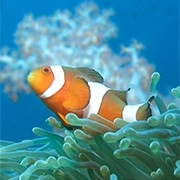Realistic Movie Props

When watching movies, it's easy to believe that everything on screen is real—from juicy steaks to splattering blood and shiny firearms.
But most of these props are carefully crafted fakes designed to look authentic while being safe and practical for filming.
Behind the scenes, art departments and special effects teams use a variety of materials and techniques to bring these illusions to life. Let's explore how movie props achieve such convincing realism.
Crafting Fake Food: Delicious Illusions
Real food often doesn't hold up well under hot studio lights or during multiple takes. To solve this, prop makers create fake food from materials like rubber, silicone, wax, or foam. For example, fake fruits and vegetables are sculpted and painted with incredible detail to mimic texture and color. Cakes and pastries might be made from foam covered with glossy paint to simulate frosting. Even liquids like milk or coffee are replaced with safe substitutes that look the same on camera but won't spoil or stain.
Creating Fake Blood: The Perfect Mix
Blood is a staple in many films, but real blood is obviously not an option. Instead, special formulas are used to simulate blood's color, consistency, and behavior. Corn syrup mixed with red food coloring is a common base, sometimes thickened or tinted with blue or brown to achieve the right shade. Fake blood can be sprayed, dripped, or squirted depending on the scene's needs. For safety and cleanliness, rubber blood is also used on costumes and sets.
Making Realistic Fake Firearms
Prop firearms must look convincing but be safe for actors and crew. Many movie firearms start as plastic or metal replicas that are modified with paint, weathering, and added details to resemble real firearms. Orange tips or bright markings are removed or disguised for authenticity. Some props incorporate mechanical parts to simulate recoil or muzzle flash safely. When real firearms are used, they are strictly controlled and handled by licensed experts.
Other Common Props: Fake Glass, Wounds, and More
Breakaway glass, made from sugar-based "candy glass," shatters safely during action scenes. Fake wounds and body parts are sculpted from silicone or latex and painted to look like real injuries. Even weather effects like snow or rain are created with practical materials to enhance realism without relying on nature.
The Art of Detail and Finishing
The key to making props believable lies in the fine details. Artists add texture, subtle color variations, and imperfections that mimic real objects. Weathering techniques make firearms look used, fake food appear freshly cooked, and blood stains look natural. These finishing touches transform simple materials into convincing movie magic.
Collaboration with Directors and Actors
Prop teams work closely with directors and actors to ensure props fit the story and performance. Props must be functional and safe while supporting the actors' movements and emotional expression. Sometimes multiple versions of a prop are made—for example, one for close-ups and another for stunts.

What Can We Learn?
Movie props are a blend of art, science, and craftsmanship designed to fool the eye and support storytelling. Understanding the effort behind fake food, blood, and weapons deepens our appreciation for the magic that makes films so immersive.
What Movie Prop Surprised You Most?
Have you ever been amazed that a prop wasn't real? Which movie prop fooled you the most? Share your favorite examples and let's celebrate the artistry behind movie illusions!

 · Cate team
· Cate team